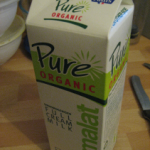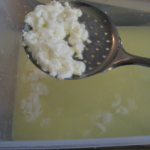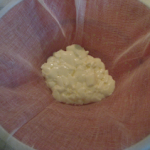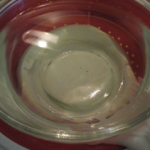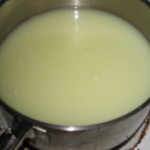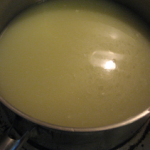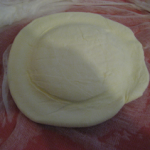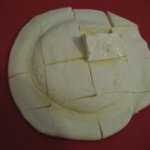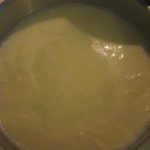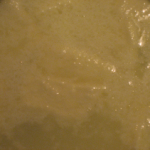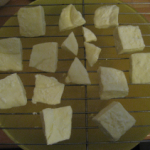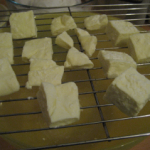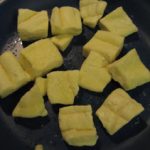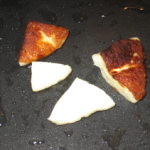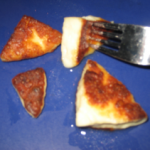Actually, it’s been over a year-and-a-half now… time for a little look back and review some of my experiences so far!
I like cooking, and increasingly I’ve also become interested in how to make things from scratch. It’s fun, educational, and generally tastes better. In quite a few cases, it’s not even more work or more time – for instance, I can prepare a pancake mix just as fast as someone doing a “shake’n’bake” thing. Of course it also means potentially using more fresh ingredients, which is nice in itself – whether you want to go organic or not.
So, late 2009, I had a thought – to just use up the meat I had in the freezer, not buy any more, and go for a culinary experiment. Eating vegetarian is not a matter of “substitution” for meats, it’s a separate cuisine – intersecting with most other cuisines of course (many Indian dishes are vegetarian, but there are also specific meat dishes).
There were a few fails early on. Went to a BBQ party and I didn’t bring extra stuff along, so I ended up eating some chicken skewers – I reckon there was enough other food so I didn’t have to, but habits… then I stayed for dinner at another friend’s place and hadn’t told them – so I just ate what they fed me. Lesson learnt there: bit of extra awareness required, until it becomes habit.
I also travelled to a conference, and while there cut myself shaving. Contrary to my normal fast healing, this wound became bigger. Took me a few days to figure that one out: vitamin/mineral deficiency. Mainly zinc. Easy to fix, once you know – I have some very good cookbooks with extra info, but just looking online is excellent also.
When you eat meat, you can be lazy. That is, as long as you do your meat and N veg in meals, you tend to get a reasonable variety of the necessary nutrients – without having to think about it. And since most people are not particularly aware of these things anyway, that’s handy. Being vegetarian is a different paradigm, different rules to get used to. Once you figure it out it’s just as easy and you need to spend extra time on it.
Interestingly, the vegetarian Indian cuisine is tuned in the same way, a vegetarian can just eat it even without awareness. As long as you go for complete meals not just individual dishes as you see on a restaurant menu. Example: protein and iron in dhal (lentils) gets best absorbed when eaten together with rice. Well, they tend to be consumer together, so it just works out.
A marathon runner once told me that when they became more fit, their body just couldn’t stand junk food any more. It repulsed him. So sticking to a healthier diet becomes really easy, once you’re used to it. It’s not a matter of resisting temptation all the time as being near junk food is just not enticing any more. And I’ve found the same with meat. I could just go and eat some, I know what it all tastes like (beef, pork, chicken, duck, roo) and it’s all nice but I just don’t need it. So I don’t miss it – you may not appreciate that perspective until you get there.
I eat very nice and tasty meals. In fact, since exploring vegetarian cuisine full time, I’ve had some of the best meals ever. It’s been fun! I’ve explored a few ingredients I hadn’t tried before, like quinoa. I’ve worked with TVP (total vegetable protein – comes in granules – in a dish you can pretend it’s mince), and added more nuts to meals. I tried a few ready-made meat substitutes, but they contain so many ingredients and additives that it’s just ridiculous. It’s not worthwhile, and as I mentioned earlier, eating vegetarian is not really about substitution at all.
What about kids? Well when my daughter is with me, she eats vegetarian too. She doesn’t miss out on anything as the meals contain all the nutrients she needs. She actually loves tofu (even though I don’t use it all the time). Anyway, it’s not a problem or a risk. We do eat some seafood – that’s my little compromise. Some fish contain things that are more difficult to get enough of from elsewhere, so with my daughter it was easier to just have the fish.
I’ve had funny conversations, for instance when going somewhere in a group and each preparing a meal for the whole group. I was told that with the activities, people would really need their protein – so not all meals would be vegetarian. Well that’s fine, but the argumentation is flawed. I need protein too, just like everybody else. There is another difference though: my body is now more used to processing vegetable protein, whereas carnivores are not – so they”re generally less efficient at that. But for one meal or even a week, and when still consuming dairy/eggs, it doesn’t matter.
I am not considering going vegan. I love my dairy – particularly cheese. I’ve started making some of my own (see other posts in this blog): french cream cheese, haloumi, feta, and camembert! There are good egg substitutes, but I really like eggs. And honey (“it’s only stealing” ;-) which I mainly use in bread making (instead of sugar) and in tea.
I do understand and appreciate the arguments vegans have against exploiting animals even indirectly, but people decide what they can focus on at a given point in time – for me, there are many social, economic and environmental aspects to it, not only animal welfare. Someone buying lots of take-away and pre-packaged foods will produce more waste and use more imported goods (transport/energy cost and foreign environmental issues), and if you fly across the country for a vegan festival you acquire a pretty large carbon footprint. To me, all those aspects are worthy of consideration also.
Wat saddens me is that quite a few vegans (not all!) I’ve encountered don’t regard being vegetarian as a valid position (or even a step to their own goal), but instead chastised me being “almost as bad as eating meat”. Obviously, invalidating the other person’s position by not seeing their perspective when engaging in a dialogue is really not a winner.
Going vegan is not something meat-eaters will readily consider, whereas going vegetarian is seen as an attainable step – particularly with many people aiming towards a more healthy and environmentally sustainable lifestyle, eating organic and local foods (locavores) – some of my friends have actually become vegetarian after I did, and seeing how well they ate at my potluck dinners (and the little challenge of bringing vegetarian food also). Those that are not vegetarian still make more vegetarian meals. I’d say that’s all pure win.
So, will I remain a vegetarian? Probably. Apart from making me feel fine, I reckon it’s better for the planet: fewer environmental resources (provided you pick the right ingredients from the right place, at the right time of year) including less energy (production as well as processing and transport). It may also be cheaper, but that depends on a lot of factors. In any case, I consider this a very successful and yummy experiment!

